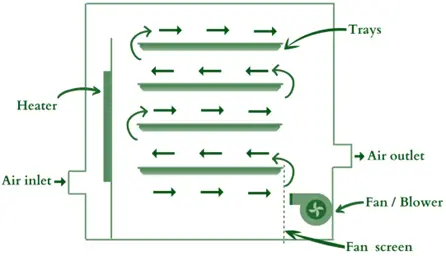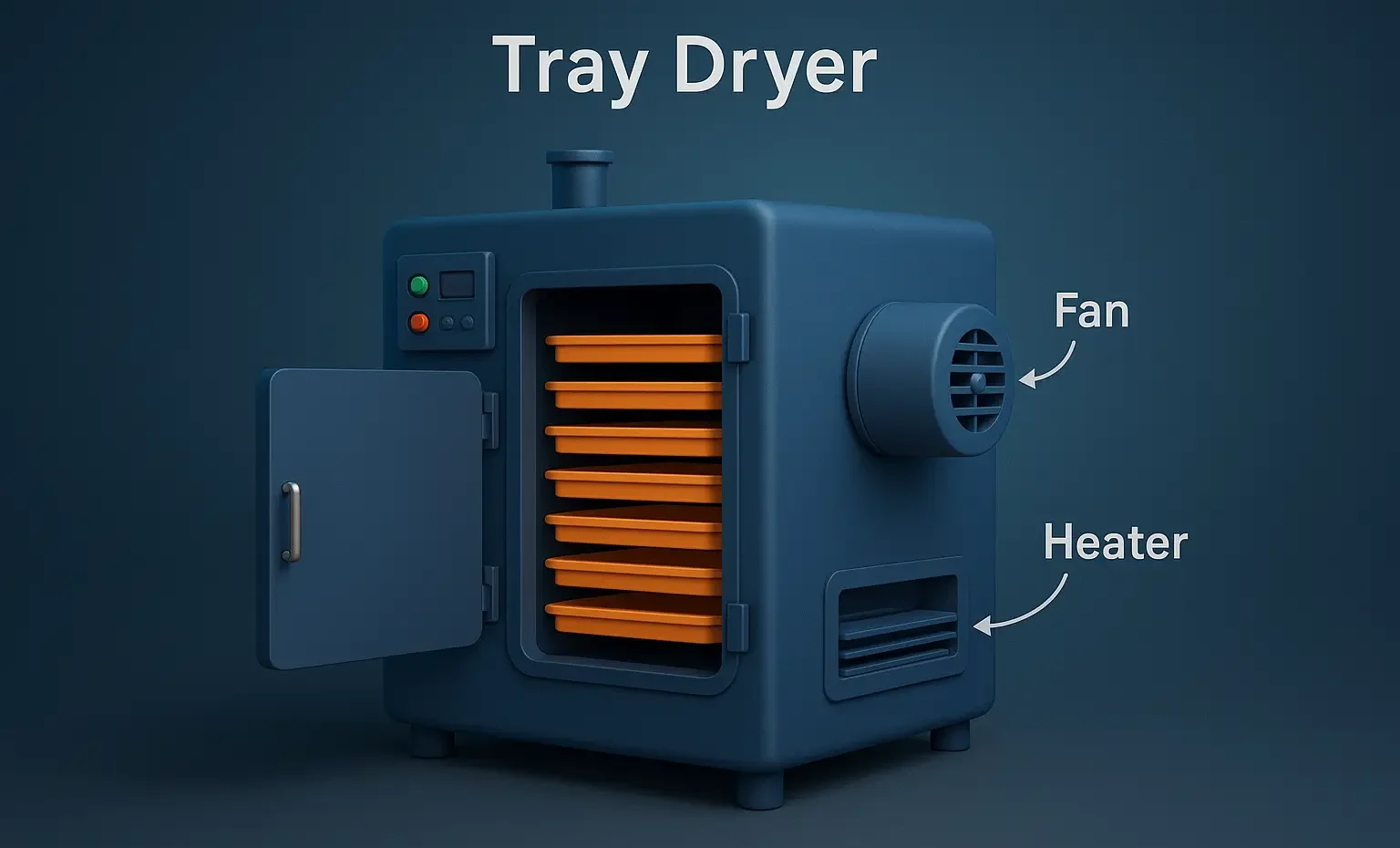Principles of Tray Dryer
- A tray dryer operates on the principle of convection drying, where heated air circulates over the trays containing the wet material.
- The moisture from the material is transferred to the air and carried away, leaving the material dry.
Construction of Tray Dryer

Advertisements
- Chamber: An insulated enclosure to maintain heat.
- Trays: Perforated trays hold the material to be dried, allowing air to pass through.
- Heating System: Heaters (electric, steam, or gas) provide the necessary heat.
- Air Circulation: Fans circulate hot air to ensure uniform drying.
- Exhaust System: Removes moist air from the chamber.
Working of Tray Dryer
- Loading: Material is spread evenly on the trays.
- Heating: Heaters raise the temperature inside the chamber.
- Air Circulation: Fans circulate hot air over the material.
- Moisture Removal: Moist air is exhausted out of the chamber.
- Monitoring: Temperature and humidity are monitored and controlled.
Advertisements
Uses
- Drying pharmaceuticals, food products, chemicals, and powders.
Merits
- Uniform Drying: Even distribution of heat and air.
- Simple Operation: Easy to operate and maintain.
- Versatility: Suitable for a wide range of materials.
Advertisements
Demerits
- Slow Process: Can be slower compared to other drying methods.
- Labor Intensive: Requires manual loading and unloading.
- Energy Consumption: Can be energy intensive.

